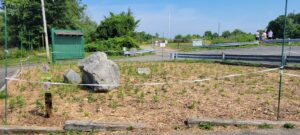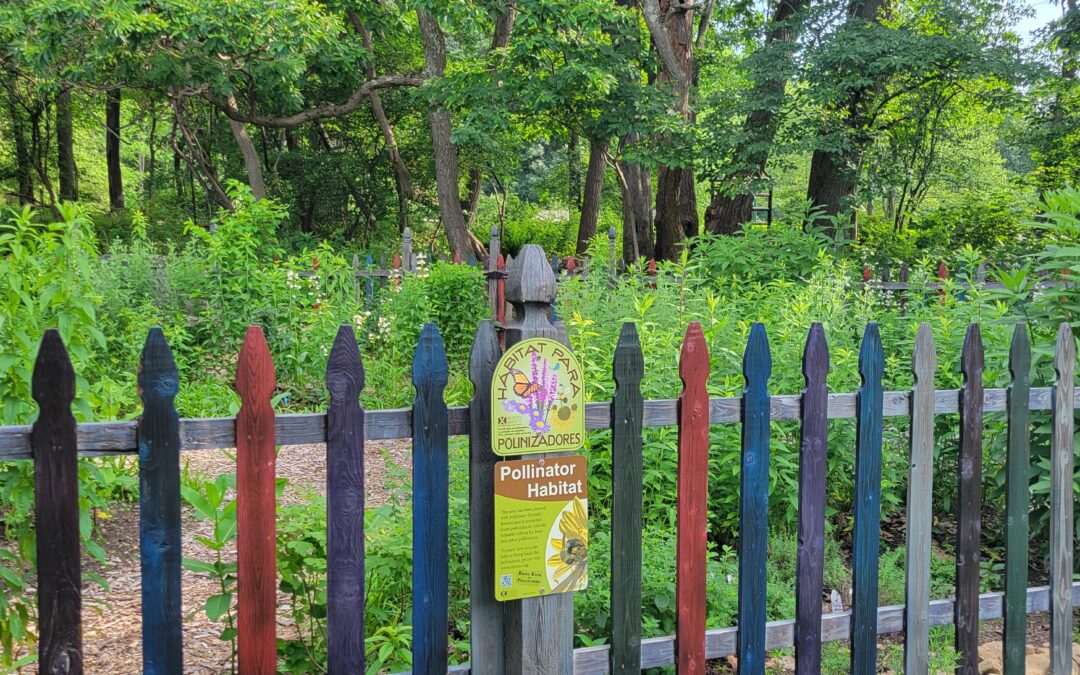
A bumble bee visits a Foxglove Beardtongue flower at the newly renovated pollinator garden at the MCR Visitor Center
According to the Xerces Society, “Pollinators are one of the easiest groups of declining animals to support in not just a rural landscape, but in a residential and urban landscape as well, since even small spaces have the potential to meet the most basic needs of the entire insect life cycle—and even simple changes to our landscaping can make a huge difference to these animals.” That said, Merrill Creek Reservoir (MCR) has been improving on existing pollinator gardens at MCR, as well as adding more pollinator areas throughout the property over the past year. These MCR pollinator garden projects provide an “outdoor classroom and/or learning center” to help educate and promote understanding and appreciation of the benefits of healthy environments while simultaneously providing critical habitat for many beneficial insects and birds.

Newly planted pollinator garden at MCR I/O Tower parking area thanks to a 2024 grant from the Xerces Society and the hard work of the MCR Staff and Volunteer Crew
With the help of MCR’s outstanding volunteer crew, and the receipt of a 2024 Xerces Society Pollinator Kit Grant, MCR enlarged and relandscaped the Pollinator Garden at the Visitor Center, as well as installed a new pollinator area at the I/O Tower parking area. In total, 1,980 native wildflowers and native grasses, were planted which provide high quality habitat for pollinators. It is important to use a diverse array of plant species for pollinator projects so to always have something in bloom from Spring through Fall to provide a continuous food source. This helps pollinators survive, especially in late fall when the blooms help them store energy for winter. Pollinators also need nectar early in the spring after hibernation or migration.
“Both projects are considered demonstration projects which encourage our visitors to use native plants for landscaping, which are not only beautiful, but benefit pollinators life cycles as these animals provide a critical ecosystem service to our food system and plant reproduction and health,” said MCR Environmental Specialist John Parke. Recent estimates show that about 88% of all flowering plants and 35% of the global plant-based food supply relies on pollinators to be successful (Manning, P., Gail, T., Hanley, M. 2014).
“The lack of native plants due to human land use or landscaping decisions coupled with climate change and proliferation of exotic species and pathogens have had a severe impact on pollinators”, said Parke. “But backyards, parks, corporate campuses, schoolyards, basically anywhere where there is currently a lawn, has significant potential for restoration activities to become critical sites for foraging and breeding of pollinators that are vital to the food chain, food webs and essentially all life on earth.”
MCR wishes to thank the Xerces Society, Pinelands Nursery, and most of all, the MCR volunteer crew who make a significant positive impact to the ecosystems at MCR through their selfless commitment to better the planet! Thank you!!!
Reference: Manning, P., Gail, T., Hanley, M., 2014, “Bioenergy, Food Production and Biodiversity – An Unlikely Alliance?”, GCB Bioenergy
Photos by John Parke

